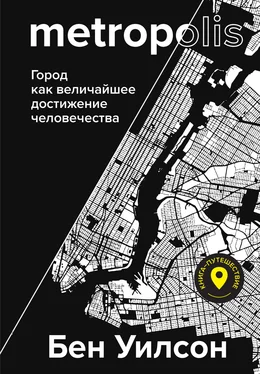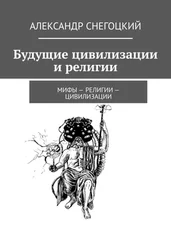Hussam Hussein Salama, ‘Tahrir Square: a narrative of public space’, International Journal of Architectural Research , 7:1 (March 2013), 128–38; Joshua E. Keating, ‘From Tahrir Square to Wall Street’, Foreign Policy , 5/10/2011, https://foreign-policy.com/2011/10/05/from-tahrir-square-to-wall-street/.
Jeffrey Hou, ‘(Not) Your Everyday Public Space’, in Hou (ed.), Insurgent Public Space: guerrilla urbanism and the remaking of contemporary cities (London, 2010), pp. 3–5.
R. E. Wycherley, The Stones of Athens (Princeton, 1978), pp. 91–2.
Judith L. Shear, Polis and Revolution: responding to oligarchy in classical Athens (Cambridge, 2011), pp. 113ff; Gabriel Herman, Morality and Behaviour in Democratic Athens: a social history (Cambridge, 2006), pp. 59ff.
Shear, pp. 178ff.
Ibid., p. 50.
James Watson, ‘The Origin of Metic Status at Athens’, Cambridge Classical Journal, 56 (2010), 259–78.
Александрия Оксианская.
Justin Pollard and Howard Reid, The Rise and Fall of Alexandria, Birthplace of the Modern World (London, 2006), pp. 1ff, 24–6.
Аристофан, «Птицы». Пер. А. И. Пиотровского.
5,8 метра.
7315 метров.
30,48 метра.
Dio Chrysostom, Discourses, 32: 36.
Fikret K. Yegül, Baths and Bathing in Classical Antiquity (Cambridge, MA, 1995), p. 31.
12,2 метра.
Richard Guy Wilson, McKim, Mead and White Architects (NY, 1983), pp. 211–12.
Garret G. Fagan, Bathing in Public in the Roman World (Ann Arbor, 1999), pp. 34–5.
Yegül, p. 30.
Ibid., p. 32.
Сенека, «Нравственные письма к Луцилию», письмо 86. Пер. С. А. Ошерова.
Fagan, p. 317.
Janet Smith, Liquid Assets: the lidos and open-air swimming pools of Britain (London, 2005), p. 19.
Ronald A. Davidson and J. Nicholas Entrikin, ‘The Los Angeles Coast as a Public Place’, Geographical Review, 95:4 (October 2005), 578–93.
Michèle de la Pradelle and Emmanuelle Lallement, ‘Paris Plage: “the city is ours”’, Annals of the American Academy of Political and Social Sciences, 595 (September 2005), 135.
5,63 километра.
Peter Ackroyd, Thames: sacred river (London, 2007), p. 339; The Works of the Rev. Jonathan Swift (London, 1801), Vol. 15, p. 62; The Times, 24/6/1865.
Pall Mall Gazette, 13/7/1869.
Andrea Renner, ‘A nation that bathes together: New York City’s progressive era public baths’, Journal of the Society of Architectural Historians, 67:4 (December 2008), 505.
Jeffrey Turner, ‘On boyhood and public swimming: Sidney Kingsley’s Dead End and representations of underclass street kids in American cultural production’, in Caroline F Levander and Carol J. Singley (eds.), The American Child: a cultural studies reader (New Brunswick, 2003); Marta Gutman, ‘Race, place, and play: Robert Moses and the WPA swimming pools in New York City’, Journal of the Society of Architectural Historians, 67:4 (December 2008), 536.
Marta Gutman, ‘Equipping the public realm: rethinking Robert Moses and recreation’, in Hilary Ballon and Kenneth T. Jackson (eds.), Robert Moses and the Modern City: the transformation of New York (NY, 2007).
Gutman (2008), 540; Smith, Liquid Assets, p. 30.
Jeff Wiltse, Contested Waters: a social history of swimming pools in America (Chapel Hill, 2007), p. 94.
Edwin Torres, Carlito’s Way: rise to power (NY, 1975), pp. 4–6.
Fagan, p. 32.
Jeremy Hartnett, The Roman Street: urban life and society in Pompeii, Herculaneum, and Rome (Cambridge, 2017), p. 1.
Juvenal, Satire, III:190–204.
Cicero, Ad Attica, 14.9; Strabo, V: III, 235; Mary Beard, SPQR: a history of ancient Rome (London, 2015), pp. 455ff; Jerry Toner, Popular Culture in Ancient Rome (Cambridge, 2009), pp. 109ff.
Стадион в пригороде Парижа Сен-Дени.
Louise Revell, ‘Military bathhouses in Britain: a comment’, Britannia, 38 (2007), 230–7.
Ian Blair et al., ‘Wells and bucket-chains: unforeseen elements of water supply in early Roman London’, Britannia, 37 (2006).
Fagan, p. 188; Piers D. Mitchell, ‘Human parasites in the Roman world: health consequences of conquering an empire’, Parasitology, 144:1 (January 2017), 48–58; A. M. Devine, ‘The low birth-rate in ancient Rome: a possible contributing factor’, Rheinisches Museum für Philologie (1985), 313ff.
David Frye, ‘Aristocratic responses to late Roman urban change: the examples of Ausonius and Sidonius in Gaul’, Classical World, 96:2 (Winter 2003), 185–96.
Yegül, p. 314.
Matthew Kneale, Rome: a history in seven sackings (London, 2017), p. 40.
Ibid., pp. 94–5.
Калька с английского skinship .
Дау – название арабских судов с косым парусным вооружением.
20 278 километров.
Regina Krahl, John Guy, J. Keith Wilson and Julian Raby (eds.), Shipwrecked: Tang treasures and monsoon winds (Singapore, 2010); Alan Chong and Stephen A. Murphy, The Tang Shipwreck: art and exchange in the 9th century (Singapore, 2017).
See Krahl et al., and Chong and Murphy.
Али ибн Абу-Талиб умер в 661 году, задолго до основания Багдада, так что неясно, кому принадлежит цитата.
Justin Marozzi, Baghdad: city of peace, city of blood (London, 2014), p. 92.
Hugh Kennedy, ‘From Polis to Madina: urban change in late antiquity and early Islamic Syria’, Past and Present, 106 (February 1985), 3–27.
Ibid.; Besim Hakim, ‘Law and the City’, in Salma K. Jayyusi (ed.), The City in the Islamic World (Leiden, 2008), pp. 71–93.
Читать дальше
Конец ознакомительного отрывка
Купить книгу











